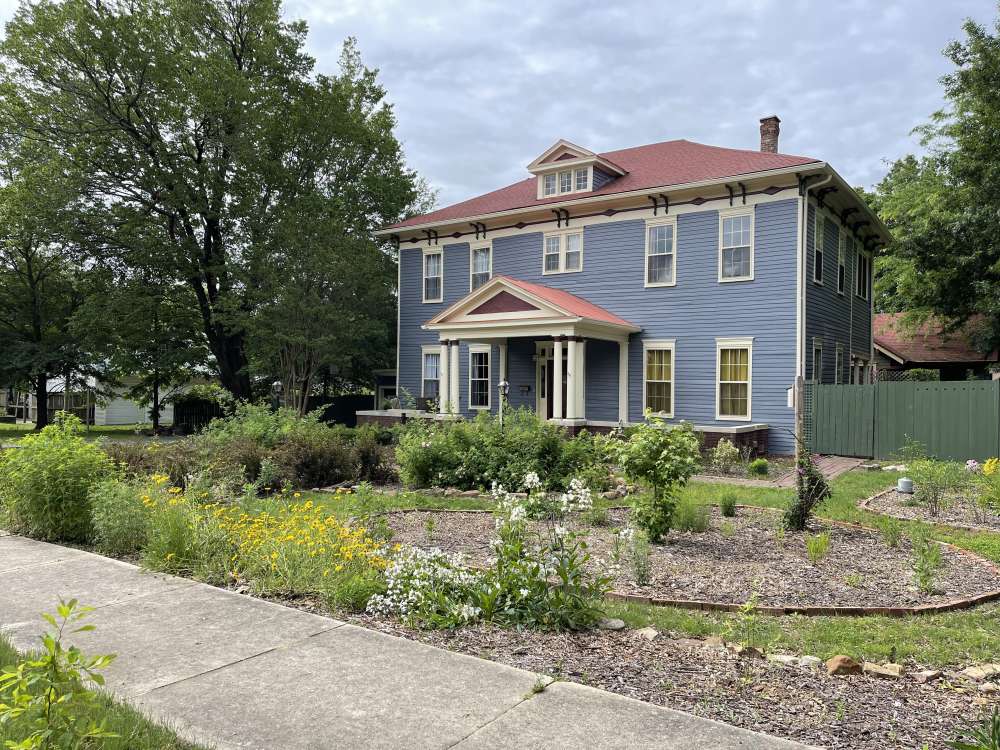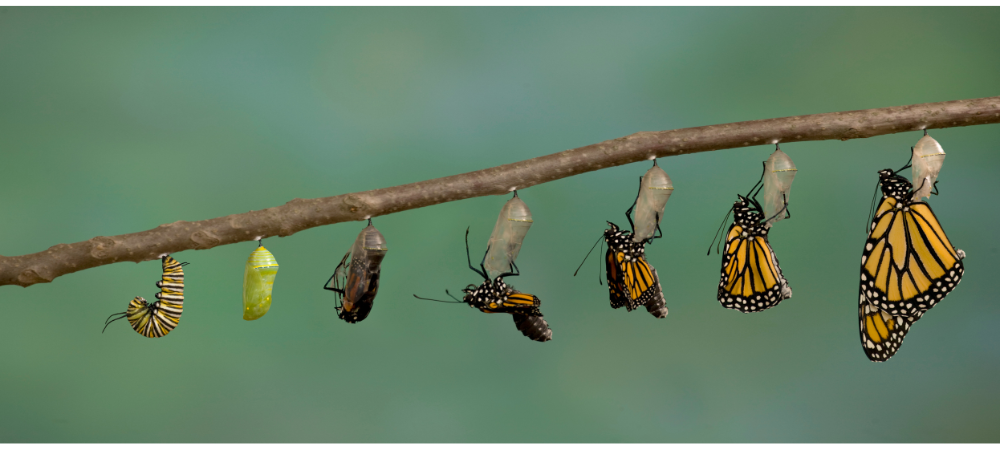Pollinator Habitat Guide to Guides: Residential Communities
Welcome to the residential communities expansion of the Pollinator Habitat Installation Guide! This tool is focused on resources and case studies specifically relevant to homeowners' associations (HOAs), neighborhood associations, community advisory boards, and other organizations within residential communities or neighborhoods that enforce rules, regulations, and guidelines for properties in the area.
These resource presented in the accordion below are organized into topics, including: guides and technical resources; bylaws, codes and regulations; and, case studies.

Pollinator Gardens and Property Standards
Know the Rules and Regulations
Wherever you live—in the U.S. or Canada, in a city or rural area—there are landscaping rules and regulations that govern what you can and can’t do on your property. It’s important to be familiar with these ordinances (the term used in the U.S.) and bylaws (the term used in Canada) because they can place restrictions on how you are allowed to landscape your yard and what plants you are allowed to grow.
Most municipalities, for example, require that lawns be maintained below a certain height.
However, there is a lot of variation from community to community with regards to the rules for almost everything else related to yards, gardens and boulevards, and especially with regards to “wildscaping” and naturalization. Some places, for example, have set-back rules, requiring a mown border strip around a naturalized area. Some places allow naturalization but require that property owner apply for a permit and provide a detailed landscape plan. In some municipalities, you are free to garden on the boulevard (perhaps with restrictions on plant types and/or plant heights), while in other municipalities this is not allowed.
Knowing the rules and regulations in advance of starting your landscaping project will help to ensure that you don’t run into problems with neighbors or municipal officials, particularly if your pollinator garden is “wilder” looking than other yards in your neighborhood.
Homeowner Associations (HOAs)
Along with municipal ordinances and bylaws, Homeowner Associations (HOAs) also have landscaping rules. These can sometimes be more restrictive than municipal regulations. Some HOAs restrict plantings to a list of “approved” species. Some include specifications of the areas where landscapes other than turfgrass can be grown (such as only in the back yard). It’s important to know the rules when you start your pollinator garden and to let the HOA Board know of your plans.
What to Do If You Receive a Notice of Violation or a Warning/Advisory Notice
If you receive a notice from your municipality or HOA, the first thing to do is to reach out to the department or person listed as the contact on the notice, to find out, or to confirm, the exact nature of the problem. For example, you may be required to have lower plants along the sidewalk or boulevard, for sightlines. You may be prohibited from growing certain plants considered to be “weeds” in your community. (Goldenrod is often included on prohibited plant lists due to misinformation about goldenrod causing hayfever. Simply informing officials that goldenrod is an important native plant for pollinators may assuage concerns.) You may be required to have a set-back of a certain distance from the sidewalk or street, with a certain area of mown grass surrounding the pollinator patch in order to signal intention.
Advocating for Change
If your municipality’s ordinance/bylaw or your HOA’s rules disallow pollinator gardens, or disallow specific native plants, or if the terms used in the rules are vague, subjective or unnecessarily restrictive, consider working for change.
Find allies within groups such as garden clubs and nature organizations, and work with municipal officials or HOA Boards to explain why supporting pollinators is crucially important and that overly restrictive or subjective rules (particularly those related to aesthetics) prevent positive action in support of pollinators. Advocate for changes to subjectively worded or overly restrictive ordinances/bylaws. Advocate for rules that ensure public health and safety at the same time as they ensure healthy pollinator habitat. Many municipalities already have policies in place regarding climate action and pollinator/biodiversity support. In your advocacy, make connections between those policies and the positive benefits of pollinator gardens and naturalization.
Tips to Avoid Conflict Over Your Pollinator Garden or Naturalization
There are many steps you can take to make it clear that your naturalization/pollinator garden is intentional and not simply a lawn “let go.” Often, this will allay neighbors’ concerns and reduce the likelihood of complaints.
Talk with your neighbors, telling them of your plans for your pollinator garden and finding out if they have concerns.
Include a yard/garden sign, indicating that this is a landscape in support of pollinators.
Include a mown-border strip around your pollinator garden.
Ensure that sightlines are clear for pedestrians, cyclists and drivers, with lower plants at the front of your garden.
Include decorative features such as a sculpture or stepping stones, cedar stumps, etc. to signal intention and care.
Stake plants that tend to flop, and make sure no plants are overhanging the sidewalk or road.
Consider placing a small, low fence around your planting.
Finally, keep in mind that while there is increasing interest in naturalization and gardening for pollinators, for many people this is a new landscaping practice and might appear unfamiliar. Keep your efforts positive by bringing people on board, sharing all the benefits of your pollinator garden for bees, butterflies and birds. Emphasize that habitat gardens are good for everyone and something we can all do, locally, to ensure a healthy environment for all.
All Resources
Click on the category in the accordion to the right to find a guide relevant to your project!
Year published: 2025
Parent organization/agency: Toronto Metropolitan University School of Urban and Regional Planning
Geographic reference: Canada
Target organism(s): General biodiversity
Level of expertise: Beginner
Link to guide: https://ecologicaldesignlab.ca/project/by-laws-for-biodiversity/
Year published: 2022
Parent organization/agency: Toronto Metropolitan University School of Urban and Regional Planning
Geographic reference: North America
Target organism(s): Pollinators, general wildlife
Level of expertise: Intermediate
Year published: No date
Parent organization/agency: Missouri Prairie Foundation
Geographic reference: Missouri, but applicable elsewhere
Target organism(s): Native plants
Level of expertise: Intermediate
Link to guide: https://grownative.org/learn/natives-for-communities/municipalities-toolkit/
Year published: No date
Parent organization/agency: National Wildlife Federation
Geographic reference: US
Target organism(s): Pollinators, general wildlife
Level of expertise: Intermediate
Link to guide: https://www.nwf.org/-/media/Documents/PDFs/Mayors-Monarch-Pledge/NWF-Landscaping-Guide
Year published: 2021
Parent organization/agency: Ecological Design Lab/Biophilic Cities Network
Geographic reference: Canada/US
Target organism(s): General wildlife
Level of expertise: Intermediate
Link to guide: https://ecologicaldesignlab.ca/site/uploads/2022/03/Urban-Biodiversity-Cultivating-Support-Through-Municipal-Codes-March-7-Update-2.pdf
Year published: 2025
Parent organization/agency: Nature Forward
Geographic reference: North America
Target organism(s): General wildlife
Level of expertise: Beginner
Link to guide: https://loudounwildlife.org/habitat-conservation/greening-your-neighborhood/
Year published: 2019
Parent organization/agency: Florida Native Plant Society
Geographic reference: USA
Target organism(s): Native plants, general wildlife
Level of expertise: Intermediate
Link to guide: https://www.fnps.org/assets/pdf/pubs/policyadvocacyhandbook2019.pdf
Year published: No date
Parent organization/agency: Chesapeake Bay Trust, Adkins Arboretum, Shore Rivers
Geographic reference: North America
Target organism(s): Native plants
Level of expertise: Intermediate
Link to guide: https://www.adkinsarboretum.org/file_download/inline/9e044a68-205f-4754-8e17-96b17909ad9a
Year published: 2016
Parent organization/agency: Michigan State University
Geographic reference: USA
Target organism(s): Pollinators
Level of expertise: Beginner
Link to guide: https://www.canr.msu.edu/news/10_things_to_think_about_before_establishing_pollinator_habitat
Year published: 2025
Parent organization/agency: Montgomery County Government
Geographic reference: USA, Maryland
Target organism(s): Native plants, pollinators
Level of expertise: Intermediate
Link to guide: https://www.montgomerycountymd.gov/DEP/property-care/rainscapes/rainscapes-for-community.html
Year published: 2022
Parent organization/agency: National Wildlife Federation
Geographic reference: USA
Target organism(s): General wildlife
Level of expertise: Beginner
Link to guide: https://www.nwf.org/Home/Magazines/National-Wildlife/2022/Feb-Mar/Gardening/HOAs
Year published: 2023
Parent organization/agency: City Towers Property Management, Inc.
Geographic reference: North America
Target organism(s): General wildlife
Level of expertise: Beginner
Link to guide: https://citytowersinc.com/community-gardens-in-condominiums/
Year published: 2021
Parent organization/agency: Toronto Metropolitan University School of Urban and Regional Planning
Geographic reference: North America
Target organism(s): General wildlife
Level of expertise: Beginner
Link to guide: https://ecologicaldesignlab.ca/project/urban-biodiversity-studio/
Year published: 2021
Parent organization/agency: Toronto Metropolitan University School of Urban and Regional Planning
Geographic reference: Toronto, Canada
Target organism(s): Pollinators
Level of expertise: Intermediate
Link to guide: https://ecologicaldesignlab.ca/site/uploads/2021/06/Model-By-law-1.pdf
Year published: 2021
Parent organization/agency: Ryerson University
Geographic reference: Toronto, Canada
Target organism(s): Grasses and weeds
Level of expertise: Advanced
Link to guide: https://ecologicaldesignlab.ca/site/uploads/2021/05/MURPHY_CARLY_MRP-FINAL-VERSION.pdf
Year published: 2025
Parent organization/agency: City of Toronto
Geographic reference: Canada
Target organism(s): Pollinators, invasive plants, turfgrass
Level of expertise: Beginner
Link to guide: https://www.toronto.ca/city-government/public-notices-bylaws/bylaw-enforcement/turfgrass-prohibited-plants/
Year published: 2024
Parent organization/agency: Nature Forward
Geographic reference: USA, Virginia
Target organism(s): General wildlife
Level of expertise: Intermediate
Link to guide: https://drive.google.com/file/...
Year published: 2019
Parent organization/agency: Minnesota's Board of Water and Soil Resources
Geographic reference: North America
Target organism(s): Native plants, general wildlife
Level of expertise: Intermediate
Link to guide: https://bwsr.state.mn.us/sites/default/files/2019-12/Native%20Landscaping%20Ordinance%20Examples.pdf
Year published: 2023
Parent organization/agency: Wild Ones
Geographic reference: USA
Target organism(s): Native plants, general wildlife
Level of expertise: Beginner
Link to guide: https://wildones.org/wp-content/images/Wild-Ones-Sample-Native-Plant-Ord.docx
Year published: No date
Parent organization/agency: Bee Friendly Garden, Pollinator Partnership
Geographic reference: North America
Target organism(s): Native plants, general wildlife
Level of expertise: Beginner
Link to guide: https://docs.google.com/docume...
Year published: No date
Parent organization/agency: Town of Collingwood
Geographic reference: Southeastern Canada
Target organism(s): Pollinators
Level of expertise: Beginner
Link to guide: https://www.collingwood.ca/sites/default/files/uploads/documents/collingwood-pollinator-strategy-v5.final_pdf.pdf
Year published: 2022
Parent organization/agency: Anonymous contributor
Geographic reference: Canada, Ontario
Target organism(s): General wildlife
Level of expertise: Intermediate
Link to guide: https://docs.google.com/docume...
Year published: No date
Parent organization/agency: Pollinator Partnership
Geographic reference: USA
Target organism(s): Moths and butterflies
Level of expertise: Intermediate
Link to guide: https://docs.google.com/docume...
Year published: 2022
Parent organization/agency: n/a
Geographic reference: North America
Target organism(s): Pollinators, native plants
Level of expertise: Intermediate
Link to guide: https://acrobat.adobe.com/id/urn:aaid:sc:VA6C2:fef9f8d5-26a6-4f15-9a47-79769d7f3b80
Year published: 2024
Parent organization/agency: David Suzuki Foundation
Geographic reference: Canada
Target organism(s): General wildlife
Level of expertise: Intermediate
Link to guide: https://davidsuzuki.org/science-learning-centre-article/an-open-letter-to-canadian-municipalities/?ref=rewildingmag.com
Year published: 2024
Parent organization/agency: Nature Forward
Geographic reference: USA, Virginia
Target organism(s): General wildlife
Level of expertise: Intermediate
Link to guide: https://drive.google.com/file/...
Year published: No date
Parent organization/agency: Chesapeake Bay Trust, Adkins Arboretum, Shore Rivers
Geographic reference: North America
Target organism(s): Native plants
Level of expertise: Intermediate
Link to guide: https://www.adkinsarboretum.org/file_download/inline/9e044a68-205f-4754-8e17-96b17909ad9a
Year published: 2019
Parent organization/agency: Minnesota's Board of Water and Soil Resources
Geographic reference: North America
Target organism(s): Native plants, general wildlife
Level of expertise: Intermediate
Link to guide: https://bwsr.state.mn.us/sites/default/files/2019-12/Native%20Landscaping%20Ordinance%20Examples.pdf
Year published: 2005
Parent organization/agency: International Network of Expertise for Sustainable Pollination, North American Pollinator Protection Campaign
Geographic reference: Canada
Target organism(s): Pollinators
Level of expertise: Expert
Link to guide: https://www.pollinator.org/pollinator.org/assets/generalFiles/Laws-Affecting-Pollinators-Canada.pdf
Year published: 2022
Parent organization/agency: National Wildlife Federation
Geographic reference: USA
Target organism(s): General wildlife
Level of expertise: Beginner
Link to guide: https://www.nwf.org/Home/Magazines/National-Wildlife/2022/Feb-Mar/Gardening/HOAs
Help Us Grow!
This Guide to Guides: Residential Communities Edition has been implemented as a pilot project. The NAPPC Pollinator Habitat Installations Task Force team would like to know more about who is using this tool and why. Consider sharing your thoughts via a brief questionnaire (yellow button below) to help make this the best it can be. Or, if there is a guide that you feel should be included but you do not see it in the lists on this page, please share your recommendation (grey button below). This page is updated on a semiregular basis, and all recommendations will be considered in the order in which they were submitted.
Recommend a Guide
